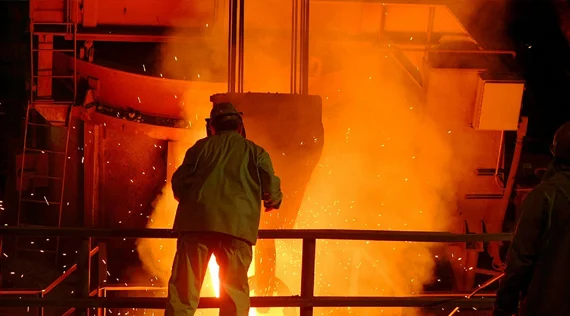AIIS Customs Corner: Update From Base Metals Center
Steel News | 2019-09-27 06:45:47
Exclusions remain a major burden. Section 232 exclusions are limited to a specific importer, are time limited, quantity limited, and are limited to the specific items covered.
SEATTLE (Scrap Monster): The leadership of Customs Base Metals Center spoke at length with the AIIS Customs Committee recently to provide an update on relevant issues for steel importers and service providers. Acting Director Diann Rodriguez, Assistant Directors Merlin Hymel and Michael Dean, and Acting Assistant Director Joseph Brubach participated on the call. (Center Director Africa Bell is on temporary assignment at Customs HQ, and will return in the Fall.)
The Center remains busy in its role of post entry processing for most entries of base metal products and its enforcement role regarding Antidumping and Countervailing Duty cases. The primary issues, however, and a major portion of the workload, involve the entries subject to the Section 232 remedies on steel and aluminum. Over 75% of all line items subject to Section 232 for steel, and almost 50% of those for aluminum, are handled by the Base Metals Center. By contrast, only 3-4% of the line items subject to the China Section 301 duties are handled by the Base Metals Center.
The Center, and Customs as a whole, faced significant challenges as the remedies went into force. Major changes were required in the programming for ACE, including the addition of quota modules (e.g., absolute quota) that had never existed previously in ACE. A new body of processes and work procedures had to be developed to handle the special coverages, different country treatments, and the exclusion process, including developing exclusion language, administering current exclusion claims, and processing a very large number of retroactive exclusion claims filed through the Post Summary Correction (PSC) process.
The Section 232 remedies have led to more claims that products are something other than covered merchandise – such as a part of a machine. CBP looks closely at these, and may suggest requesting a binding ruling. Importers should always reference any applicable binding ruling, on the invoice or the 7501 form. There is also a substantial increase in value issues, whether claiming non-dutiable charges (particularly duty paid terms like “DDP”) that were not bothered with by importers when the duty rate was free, or just price decreases by suppliers to (partially) offset the duties. CBP monitors the price changes, looking in part to see if they are improperly offset in some other manner (such as out of scope product prices) or otherwise indicate some type of evasion.
Exclusions remain a major burden. Section 232 exclusions are limited to a specific importer, are time limited, quantity limited, and are limited to the specific items covered. Each requires time to verify. The Center expects that companies that have secured exclusions should self-monitor, ensuring that any claims fall within the coverage and approved quantity of the exclusion, and not rely on Customs to inform them of issues. The parameters of an exclusion are based on actual, not nominal, criteria. It was also noted that many exclusions are very specific, and goods, even if commercially interchangeable and covered by the same tariff item, that do not strictly conform to the exclusion will not receive the benefit. When exclusions are claimed retroactively by PSC, some time may be required to process due to the factors above, plus the sheer volume of requests, with over 40,000 exclusions granted. The Base Metals Center PSC workload has increased approximately 1500% from pre Section 232.
Some issues with exclusions that can take time to resolve occur when a company is purchased, or undergoes a name change. Others are due to incorrect (or missing) invoices and mill certificates (there are regular problems with the wrong mill certificate being submitted for an entry), incorrect product descriptions, requesting amounts in excess of the exclusion granted, and seeking to apply the exclusion to products not covered by it. In some cases, a problem due to ACE programming occurs when a second exclusion claim is made retroactively via PSC on an entry for which a previous claim was allowed if that previously claimed exclusion is exhausted and deactivated. [ACE will reject a PSC if there is a line on the entry with a deactivated exclusion, even though that line has nothing to do with the new exclusion claim.]. Customs may still use the entry rejection process to require refiling of entries in conformity with the specific requirements. The best approach for any importer is to put in good data, and be sure to demonstrate why a particular exclusion applies to the shipment in question.
Good data is important for areas other than Section 232 and exclusions. The primary problem with entries remains incorrect classification. The most common documentation problems are the lack of or an incorrect mill certificate, and invoices that do not fully and completely describe the product. Problems also occur for products subject to AD or CVD cases where either no AD/CVD claim is made (wrong entry type), or the wrong case number, no case number, or only one of multiple applicable case numbers is provided, and where no duty deposit or an incorrect duty deposit amount is made. The Center is using more Form 28 Requests for Information and more Form 29 Notices of Action to secure correct and complete information, with the Notices providing that actions adverse to the importer will be taken where no response is filed.
The shift of post entry processing to the Centers and also the shift to account based processing means that the import specialists, in general more knowledgeable and trained in a specific tariff area, now should be familiar with whatever commodities their assigned accounts import. Most regular importers are handled nationwide by a single team or single import specialist, with vacation or overflow going to others in the same team. This allows for better knowledge about an importer, and the ability to learn which importers have done their due diligence and which ones have not. The Center structure also better permits resources to be focused on specific industries and issues. The Center looks for importers to be pro-active – making inquiries of their brokers and if appropriate the Center rather than just taking a chance. Brokers are expected to know their importers and products, and not pass the buck to Customs to do their job.
Section 232 issues and the growing expertise of the Base Metals Center do not change the compliance responsibilities of importers. They do, however, increase the level of scrutiny that Customs applies to those compliance responsibilities and the likelihood that errors and mistakes by importers may lead to enforcement actions. Importers and brokers should be particularly careful in this changing environment.
Courtesy: AIIS
 By
By 